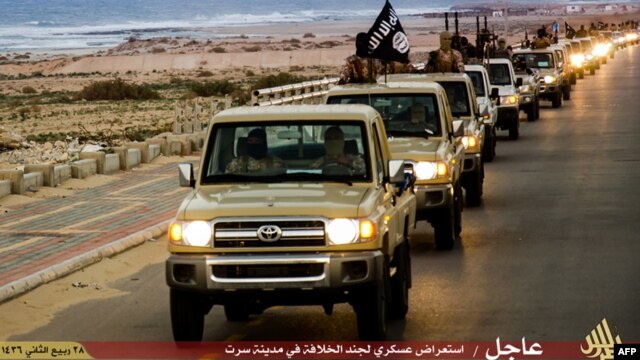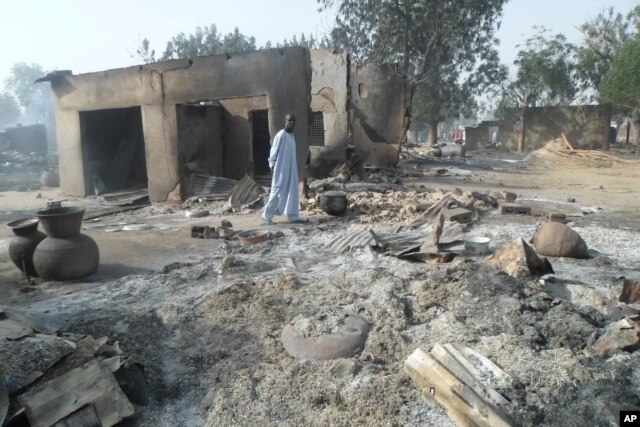US Sees Islamic State Group Spreading its Tentacles
- =
FILE – An image made available by propaganda Islamist media outlet Welayat Tarablos on Feb. 18, 2015, allegedly shows members of the Islamic State (IS) militant group parading in a street in Libya’s coastal city of Sirte, which lies 500 kilometers (310 miles) east of the capital, Tripoli.
While al-Qaida, Boko Haram and al-Shabab continue to launch destabilizing attacks, the State Department said IS remained the greatest threat globally last year, with a “formidable force” in Syria and Iraq.
It says while some of the Islamic State’s forces in these two countries eroded during the latter half of 2015, fighters with the militant group managed to wage a series of attacks elsewhere, in countries including France and Turkey.
Islamic State also made gains in Libya and established affiliates in countries including Afghanistan, Pakistan and Nigeria.
The State Department lists nearly 60 U.S. designated foreign terrorist groups in its annual report, and it also singles out several countries as bad actors in the global fight against extremism.
In a VOA interview, Acting Coordinator for Counterterrorism Justin Siberell said the report tries to provide a “better understanding of what is going on at the localized level” so that the U.S. and its allies can tailor efforts to fight extremists.
“Although our efforts have been quite successful in keeping these groups off balance, they continue to recruit new members,” Siberell said.
“Our response really needs to be expanded into a better understanding of the drivers of radicalization,” he said.
A man walks past burnt-out houses following an attack by Boko Haram in Dalori village 5 kilometers (3 miles) from Maiduguri, Nigeria, Jan. 31, 2016.
Other Key Findings:
Boko Haram: Declared Islamic State affiliation; Killed thousands of people and displaced hundreds of thousands in Lake Chad Basin region.
Al Qaida: Central leadership weakened, but group remained threat; Inspired network of affiliate groups in Arabian Peninsula, Maghreb and Indian subcontinent.
Al Shabab: Waged deadly attacks in Somalia; Sought to reverse progress made by Somali government and weaken “political will” of AMISOM (African Union Mission in Somalia).
Bad State Actors:
Iran: Considered “foremost” state sponsor of terrorism; Cited for support of Hezbollah, Palestinian terrorist groups in Gaza, extremists in Iraq and throughout Middle East.
Sudan: Retained State Sponsor of Terrorism designation due to U.S. concerns about support of groups including Fatah, Palestine Islamic Jihad, Hamas, Hezbollah.
Syria: Assad regime provided political support to terror groups affecting regional stability; Provided weapons, political support to Hezbollah.
Progress:
-The State Department said 45 countries passed or updated laws dealing with foreign fighters.
-Thirty-five countries arrested foreign fighters.
-Twelve countries “successfully prosecuted” at least one foreign fighter, last year.

